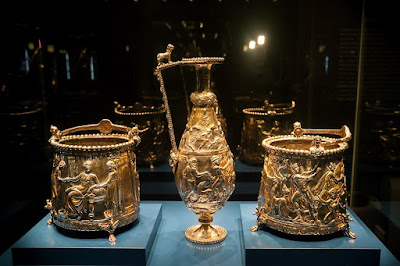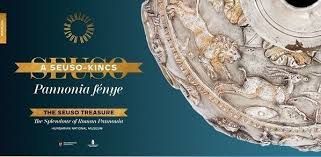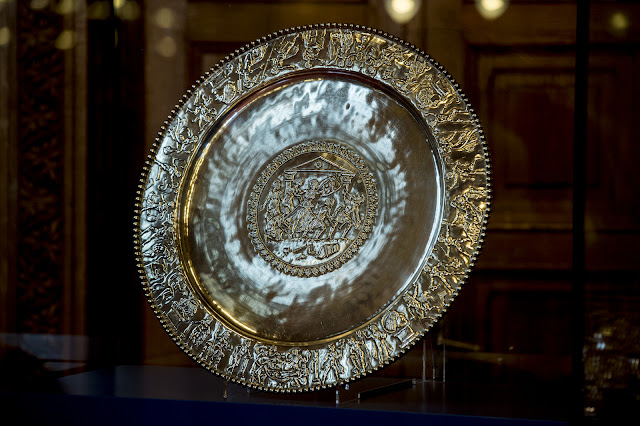On July 28, 2019, the new, permanent exhibition of the Seuso Treasure opened at the Hungarian National Museum in Budapest. This famed collection of 14 silver items of tableware represent the most valuable silver treasure collectıon from the late Roman Empire. The pieces of the silver tableware represent the highest level of art of their era. The treasure was discovered in the 1970s and was subsequently smuggled out of Hungary. I reported on its recovery by the Hungarian state on two previous occasions - see the first post, and this one as well. During last year, the treasure was already on view at the Hungarian National Museum, in a temporary exhibition. Now the items were moved into another part of the Museum, and an introductory part - focusing on the role of silver objects in the late Roman period - was added to the exhibition. The silver quadripus thought to belong to the set (and known since the 19th century) is also on view. The pieces can be examined in well-lit large glass showcases, and a visit to the Treasure is now part of the permanent exhibition ticket of the Museum. On this occasion, a well-illustrated new publication was also published about the Seuso Treasure. The exhibition was curated by Marianna Dági and Zsolt Mráv.
The Seuso Treasure - The Splendour of Roman Pannonia. Permanent exhibition of the Hungarian National Museum.






